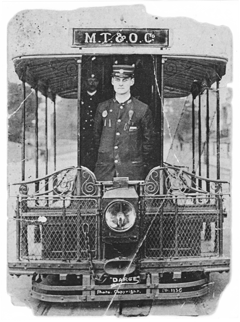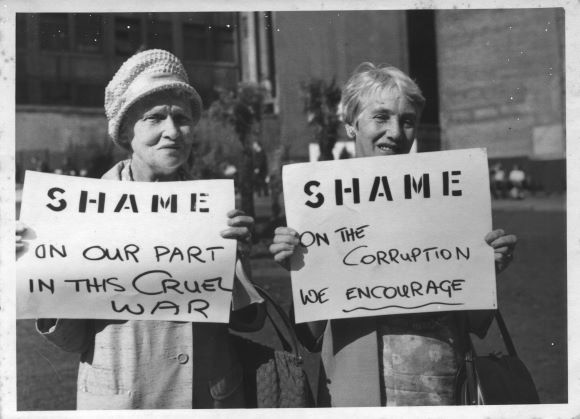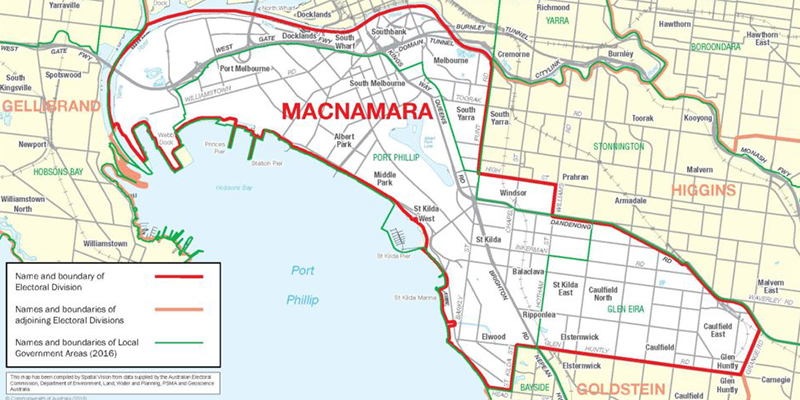Now and Then 2021 – Corner Bay and Beach Streets
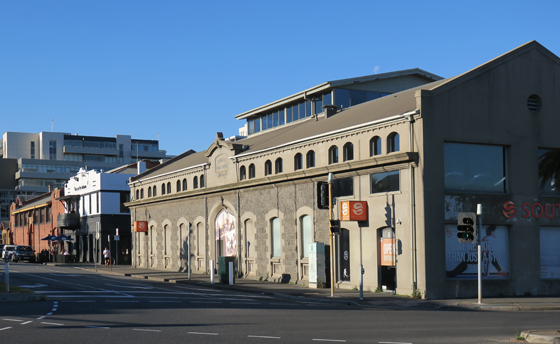
For more than 150 years Morley’s Coal Depot has stood on the south-east corner of Bay and Beach Streets. William Morley was a prominent local merchant in Port Melbourne in the years of the gold boom. In 1860 he was elected as the first chairman of the Sandridge Council. The coal supplied the gas works in Sandridge and Emerald Hill. The bluestone building has been converted into a modern gymnasium. Immediately opposite is the Port Melbourne Yacht Club built on the site formerly occupied by Town Pier.
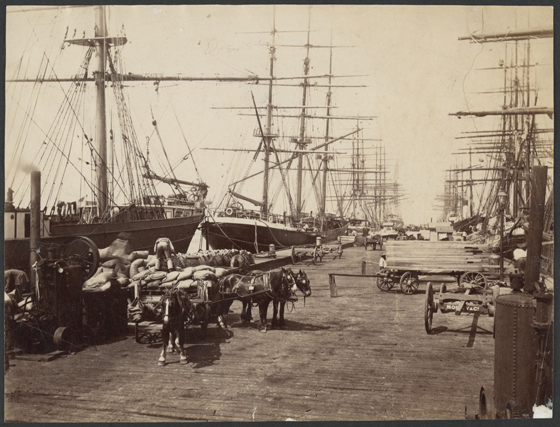
The first Town Pier was built in 1849 when it could take 8 ships with a draft of less than 2.5 metres. Over the years it was extended and rebuilt. In both wars it was used for troop departures and returns. Morley’s Coal Depot can be seen in the background of this photograph of returning wounded soldiers in 1917.
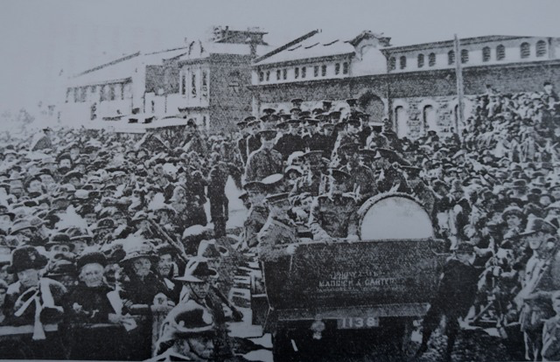
Diggers in Bay Street
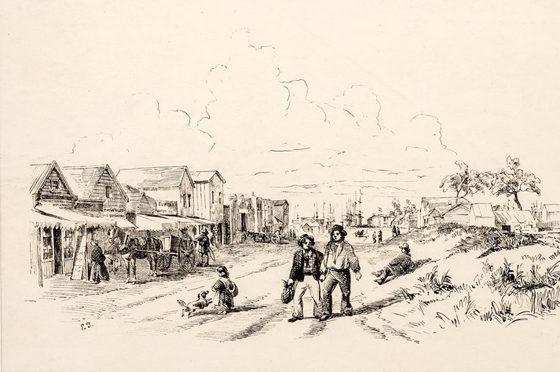
The sketch by Edmund Thomas is one of the earliest pictures of the western end of Bay Street looking toward Hobson’s Bay. At that time this section of Bay Street was the commercial centre of Sandridge, lined with shops, pubs and warehouses.
Cable Trams
The cable tram route from the city to Port Melbourne Railway Station, was opened in June 1890. The route ran along City Road and Bay Street before turning into Beach Street at this corner and terminating at the Railway Station. In order for the tram to turn from Bay Street into Beach Street the engineer George Duncan designed the first ever right hand turn for a cable tram.
Bert Turner, Cable Tram Conductor on the Port Melbourne Line, right. PMHPS Collection.
Liardet’s Pier Hotel
On the opposite side of Bay Street once stood the Pier Hotel, built by Wilbraham Liardet in 1840. He made this water colour from memory about 1874. When it was opened the area was simply known as “The Beach”. The present route from this corner to the city via Bay Street, Crockford Street and City Road follows the line of the rough bush track hewn out of the scrub in the 1830s. The original track is attributed to William Darke who surveyed the area and it is recorded on Robert Russell’s map of Melbourne dated 1837. Wilbraham Liardet and his sons widened and improved the track after their arrival in the area in 1839.
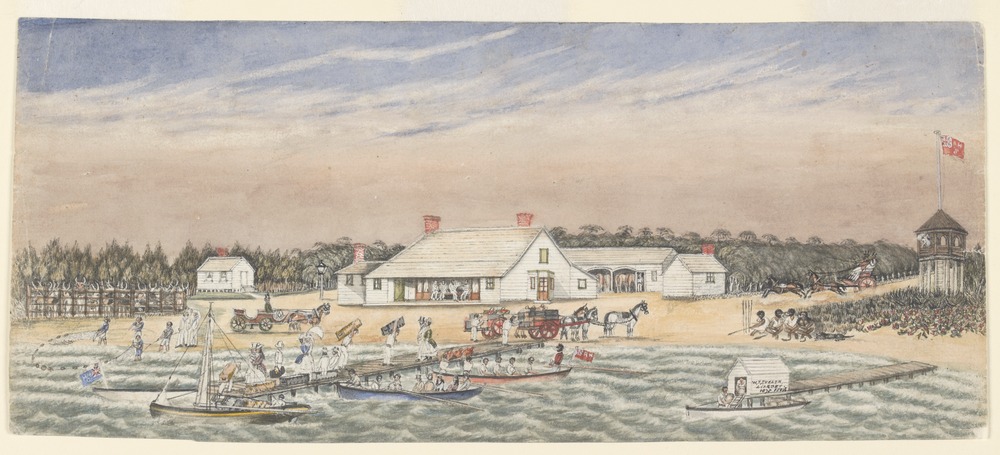
Visit of Duke of Edinburgh 1867
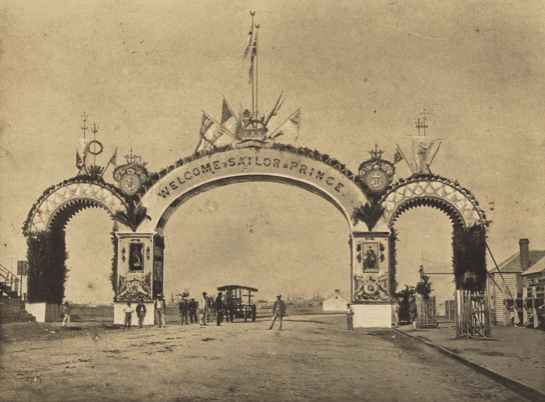
Prince Alfred, Duke of Edinburgh, second son of Queen Victoria was the first member of the Royal Family to visit Australia. This welcome arch was erected over Bay Street near the corner of Beach Street, for the occasion. The Prince Alfred Hotel, 355 Bay Street, on the corner of Spring Street, was licensed in that year.
Hilaria Burns at Town Pier
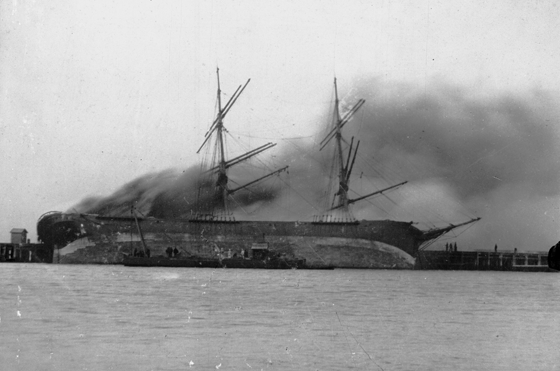
In July 1895, the Hilaria, a wooden sailing ship that traded between ports in Australia and the South China Sea was destroyed by fire while tied up at Town Pier. The master and crew were saved but a local policeman who was assisting fell into the hold and was killed.
This article is based on one of the panels that formed the Now and Then Exhibition of the Port Melbourne Historical & Preservation Society in 2021. The original panel can be seen here.
Beacon Cove Towers | Now and Then 2021 | HMAS Apartments and Lagoon Pier

